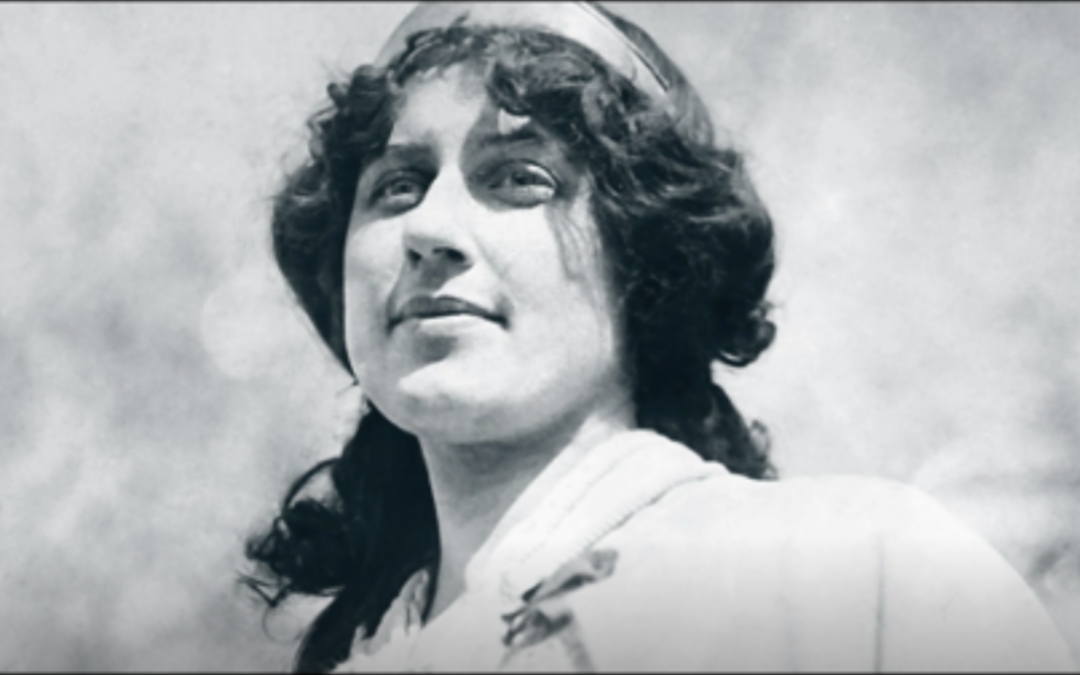by
_____
In late summer 1916, campaigners for the woman’s vote hit a wall. After decades of petitioning, lobbying, negotiating, wrangling, strategizing, and thousands of public speeches, women across the nation still had not secured the right to cast a ballot.
With a presidential election just over two months away, suffragists needed President Woodrow Wilson to change his mind and support their cause.
And so the suffragists unleashed a powerful weapon: a battalion of women speakers across the Western states.
She and the other intrepid women who took part in the Western campaign left an enduring example that continues to inspire generations of women.
Artist Jeanine Michna-Bales has created a project commemorating that historic speaking tour and its most famous participant, suffragist Inez Millholland.
Michna-Bales spent years researching Milholland’s journey. Her traveling exhibit, “Standing Together: Photographs of Inez Milholland’s Final Campaign for Women’s Suffrage,” will also be published as a book.
The Western campaign sent hundreds of women to speak where suffrage had already been secured at the state level. The mission was to persuade the four million voting women of the West to cast a protest vote, support their non-voting sisters back East, and turn Wilson and the Democrats out of office.
Their message was that the suffragists were an unstoppable political force.
Throughout the late summer and early fall of 1916, women travelled from the East coast to the West, alone and in groups, by train and by car, to speak at venues large and small.
Inez Milholland had found her voice at an early age. Raised in a privileged environment, she and her younger sister Vida were known for their glamour and sophistication —and their commitment to radical leftist causes.
Inez Milholland posed the question of the moment: “How long, Mr. President, must women wait for liberty?” — and with that, collapsed.
As a student at Vassar, Inez Milholland joined the debate team and played Romeo in a student production of “Romeo and Juliet.” The summer after her sophomore year she traveled to England, where she met suffragist Emmeline Pankhurst.
Back at Vassar in her junior year, Milholland helped launch the Vassar Votes for Women Club. Because any discussion of woman’s suffrage was strictly forbidden on campus, the group met in a graveyard off campus.
Milholland was still a student during the 1908 presidential campaign for President Taft, when suffragists paraded in the streets of Manhattan. Watching from a window above the route, Milholland grabbed a megaphone and called out: “Votes for women!” — launching her suffrage speaking career.
From 1911 to 1913, it was Milholland who rode astride a horse at the head of several suffrage parades — first in Manhattan and later in Washington DC. Strikingly elegant in her cape and crown, she was dubbed “a modern-day Joan of Arc.”
But Milholland wanted to fight for women’s rights in the courtroom. She earned her law degree from NYU and became an ardent legal reformer. Her investigation into graft and inhumane conditions at Sing Sing prison led to the indictment of the warden.
She also threw her support behind the suffrage strategy to press for a constitutional amendment, and spoke for suffrage in the US and England.
“She would get nervous before a speech, but she made herself do it,” said Linda Lumsden, author of The Life and Times of Inez Milholland, in an interview with the Washington Post. “She was full of doubts about her abilities, but she would plunge ahead anyway.”
In fall of 1916, Milholland (her married name was Boissevain) and her younger sister Vida joined the Western campaign against President Wilson and the Democrats, organized by the National Women’s Party.
Michna-Bales dug into in old archives and newspaper clips to retrace the steps of Milholland’s grueling 12,000 mile tour — from New York to Chicago and other points west lincluding Cheyenne, Sacramento, Reno, and small towns like Green River, Wyoming, Great Falls, Montana and The Dalles, Oregon.
Crisscrossing eight states, she delivered an exhausting 50 speeches in just 28 days. She would typically speak for about two hours, then linger to answer questions.
Everywhere, the crowds were enthusiastic and the press reports glowing. “”Her manner was convincing and her personality magnetic,” said the Idaho Statesman, after her appearance in Boise.
But as fellow suffragist Maud Younger recalled later in a memorial speech, the trip “was fraught with hardship. Speaking day and night, [Milholland] would take a train at two in the morning to arrive at eight; then a train at midnight to arrive at five in the morning. . . “
And Milholland was in poor health — even while she was preparing for the trip, her doctors had warned her about overexerting herself. As she traveled, her health deteriorated.
“It was heartbreaking reading her letters to her husband as the trip progressed, knowing that she was pushing herself too hard,” Michna-Bales told the New York Times. “She wrote about ‘doctoring’ herself with drugs she was given to get through the trip: iron, arsenic and strychnine.”
In Oregon, Milholland told reporters: “I cannot see how I keep going, but I just have to.”
On October 23, 1916, at Blanchard Hall in Los Angeles, Milholland began to deliver a passionate speech to an audience of more than a thousand woman.
“Women of the West, stand by us in our crisis,” she told the crowd. “Give us your help, and we shall win. Fight on our side and liberty is for all of us!”
She was only midway through the speech when she delivered a defiant challenge: “How long, Mr. President, must women wait for liberty?”
With that, she collapsed.
Milholland was carried off to Good Samaritan Hospital, where ten weeks later, she died. She was 30.
Yet her words lived on, adopted as the slogan for picketers who for thirteen months in 1916-1917 stood silently in front of the White House, pressuring Wilson to change his mind — which eventually in 1918 he did.
Milholland did not live to see the passage of the 19th Amendment.
But she and the other intrepid women who took part in the Western campaign left an enduring example that continues to inspire generations of women after them — the power of the spoken word.
© Copyright 2020
________________________________
Want to talk? Reach me at dana@danarubin.com







